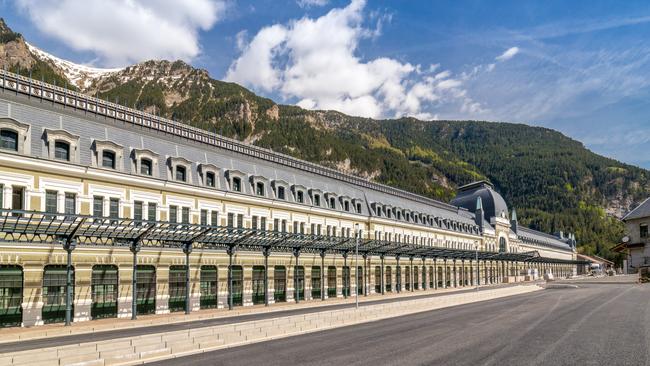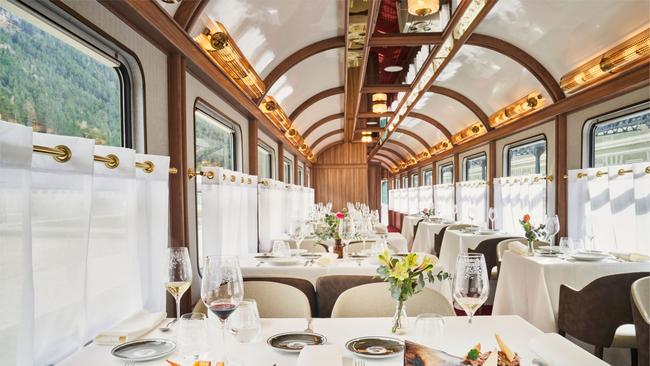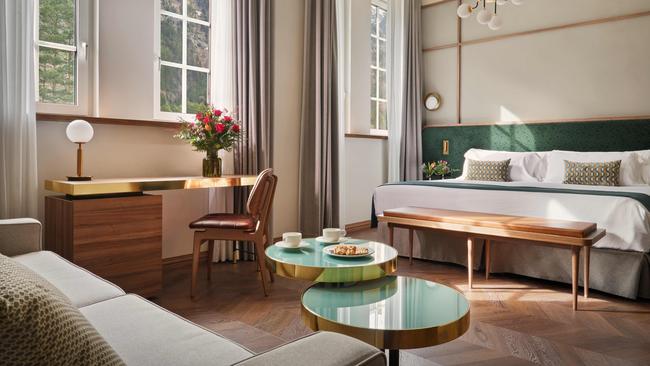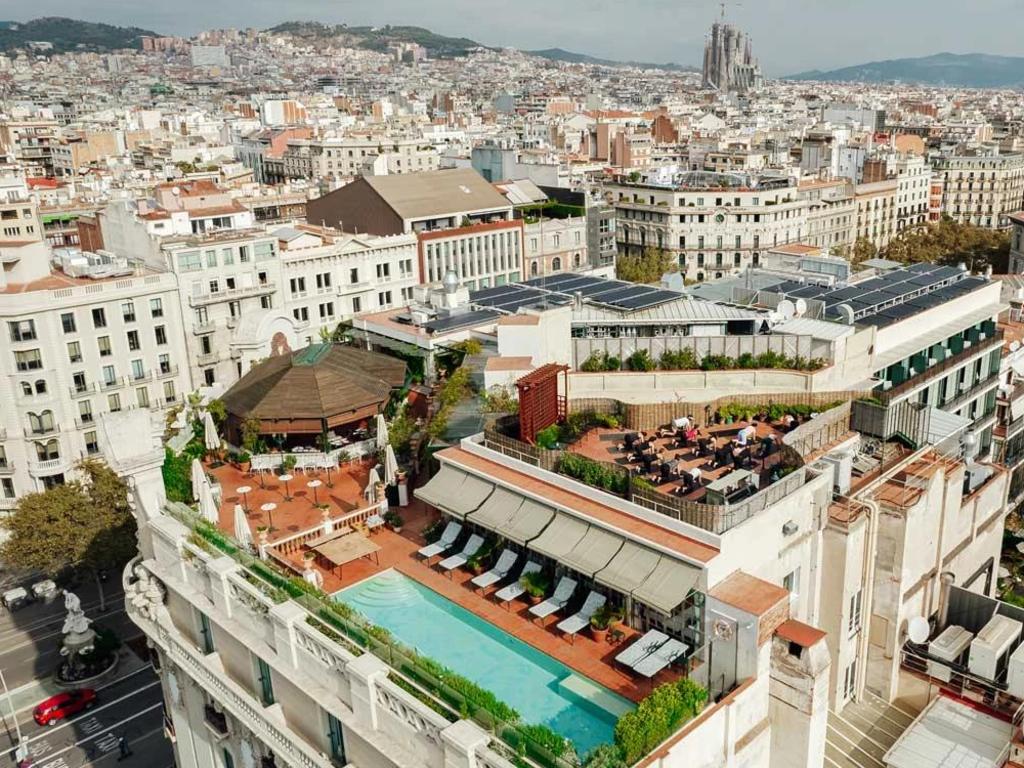Canfranc Estacion train station opens as luxury hotel
This historic train station bordering France and Spain fell into disrepair but has been reborn and now thrums with life.

Canfranc International railway station inspires comparisons with The Grand Budapest Hotel, Wes Anderson’s 2014 film. It’s a splendid Beaux-Arts construction surrounded by snow-capped Pyrenean peaks. Completed in 1928, this cathedral of concrete, steel and glass was intended to rival the world’s great stations. At its opening, the three-storey, 240m-long building with 156 doors was the second largest railway station in Europe (after Leipzig in Germany), able to handle thousands of passengers a day. Its vastness was in part due to railway tracks on each side of the border between France and Spain running on different gauges, meaning everyone and everything would have to be transferred between locomotives.
One of just three places where trains crossed the border, it would link Canfranc, an isolated village in Aragon, to Paris, Madrid and Lisbon. The mountain pass had long been one of strategic importance, first used by Barbarians and Vandals; then bandits and smugglers; later Nazis and spies. During the station’s inauguration, King Alfonso XIII of Spain declared that “the Pyrenees no longer exist”.

Marred by technical issues, diplomatic difficulties, a fire soon after its opening and then the Spanish Civil War, which began in 1936, Canfranc had an impossible start. The border was shut and its Somport rail tunnel sealed by Nationalist leader Francisco Franco. During World War II, the station also became a crossing point for illicit and lucrative trade between Spain and German-occupied France. After a derailment destroyed a bridge in 1970, the railway closed and its most famous stop – nicknamed the Titanic of the Mountains – shut for good. Decades later, abandoned freight or passenger cars were still rotting in weeds.
In 2013, the station’s fortunes changed when the Aragon regional government bought it with a rescue plan in mind. In January, the station finally reopened as a show-stopping 104-guestroom hotel. The old booking hall is now an almost ecclesiastical triple-height lobby manned by a bellboy in a 1930s-inspired uniform and kepi. Restored stucco and original brass lamps frame a marble staircase that leads guests under the tracks to the forecourt. The space thrums with life.
The Madrid-based design studio Ilmio is behind the interiors. Our generous second-floor junior suite is decorated in smart shades of mint and cream and accessorised with spherical milk-glass lampshades. One of the station’s 365 original wooden windows hangs as a work of art, displaying monochrome photos of 20th-century Canfranc. The four suites are named after key figures in the station’s past, including Albert Le Lay, Canfranc’s wartime customs chief and, so he pretended, a Nazi collaborator. Le Lay enabled hundreds of political refugees and Jews to flee Hitler’s regime to Spain. Painters Max Ernst and Marc Chagall were among those who crossed here, as was cabaret artiste Josephine Baker. All this was unknown until 2000, when a bus driver stumbled across a sheaf of classified Nazi papers in one of the yard’s dilapidated buildings.

Backlit railway clocks, low-slung leather sofas, brushed brass and William Morris wallpaper decorate Restaurante la Estacion. But the triumph is the food, overseen by chef Eduardo Salanova and front-of-house manager Ana Acin, whose other establishments include Michelin-starred Espacio N in nearby Esquedas. Hailing from Canfranc, Salanova uses ingredients from the region such as trout plucked from the Cinca River and Aragonese eggs, chicken and veal. The dishes reference local specialities. Migas, for example, is a peasant dish of fried breadcrumbs and pork, served with green grapes. The 500g shoulder of Huescan lamb is, Salanova says, “a symbol of Aragonese cuisine”. Dessert is a flan made to a recipe passed down by Salanova’s grandmother Angelina. There is also a tasting menu served within two vintage rail cars a few steps from the main hotel. At the other end of the building is the teal-panelled La Biblioteca bar, with all the cocktails made table-side.

In winter, when Canfranc station is iced like a wedding cake, people come here to ski or snowshoe. In other seasons, visitors can enjoy trekking, horse riding, climbing or canyoning. The scenery is filmic. We take a mountain stroll led by guide Raul Martinez. Gentians, asphodels and other wildflowers carpet the hills with shades of pink, deep blue and yellow. A deer prances across our path. Near the 10th-century San Juan de la Pena monastery, we hear the jingling song of corn buntings and spot half a dozen vultures circling idly on a thermal.
Over breakfast, I chat with a guest in his sixties from Madrid. Long curious to visit such a “mythical” building, he says he is impressed, apart from having to pay to use the (busy on our visit) indoor pool. Other add-ons that can be arranged include hot-air balloon rides, zip-lining and caving. One of my highlights is a gentle historical tour given by an Argentine couple, fashion designer Ana and engineer Marcelo. They share Canfranc’s history as we stroll the shaded promenade, and visit wartime bunkers and a doorway to the Somport tunnel. The pair also teach yoga and we finish with some restful forest bathing.
Rail is, naturally, the most fitting means of arrival at Canfranc. Lovers of locomotives and slow travel can ride four-hour services from Zaragoza. Plans to rebuild the cross-border track remain a long way from realisation but, after nearly 100 years of bad luck, Canfranc Estacion’s fortunes have finally turned.
IN THE KNOW
Canfranc Estacion, a Royal Hideaway Hotel, has rooms from €149 ($253) a night. Tours can be booked via the hotel.
Victoria Brzezinski was a guest of Canfranc Estacion, a Royal Hideaway Hotel.
THE TIMES





To join the conversation, please log in. Don't have an account? Register
Join the conversation, you are commenting as Logout